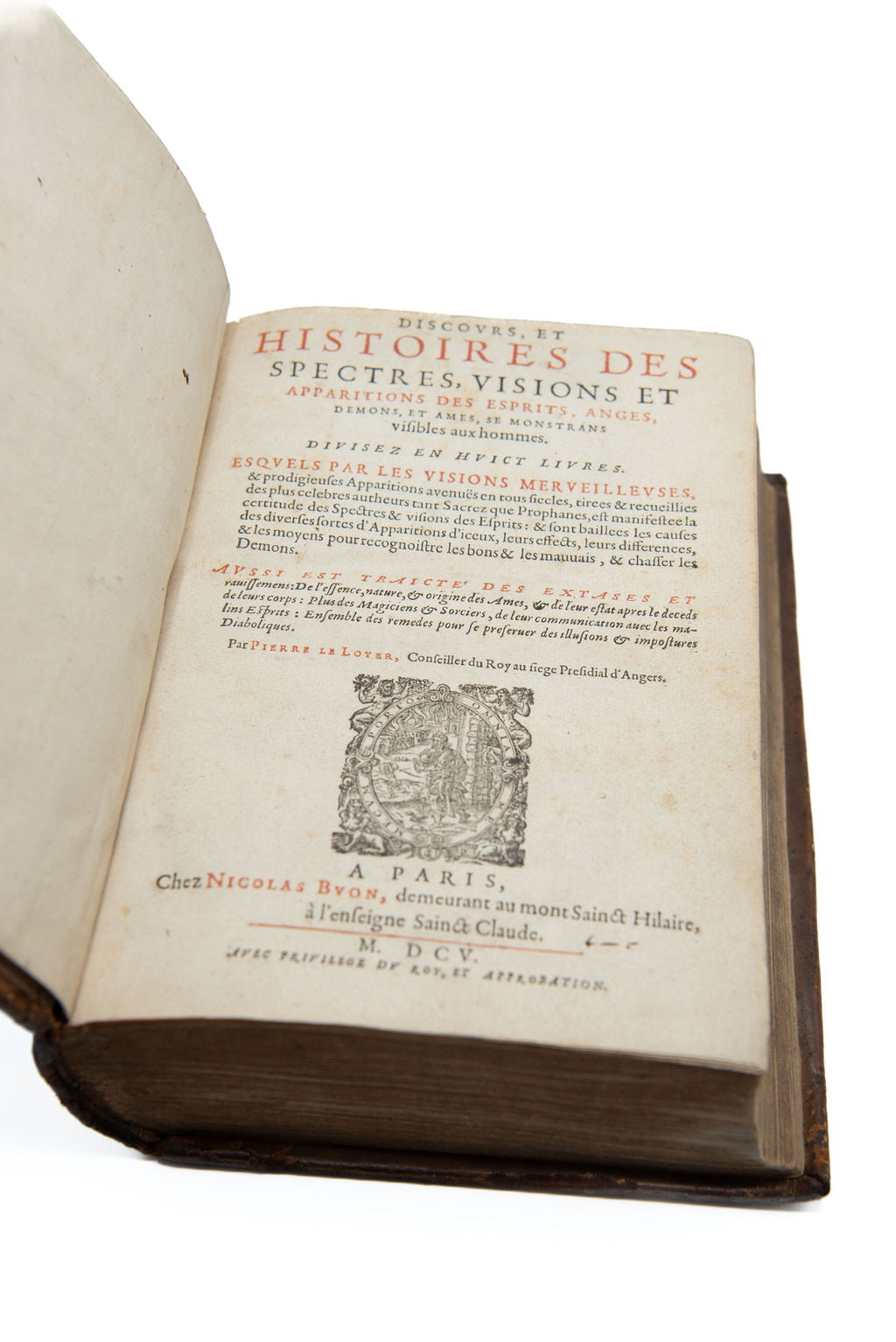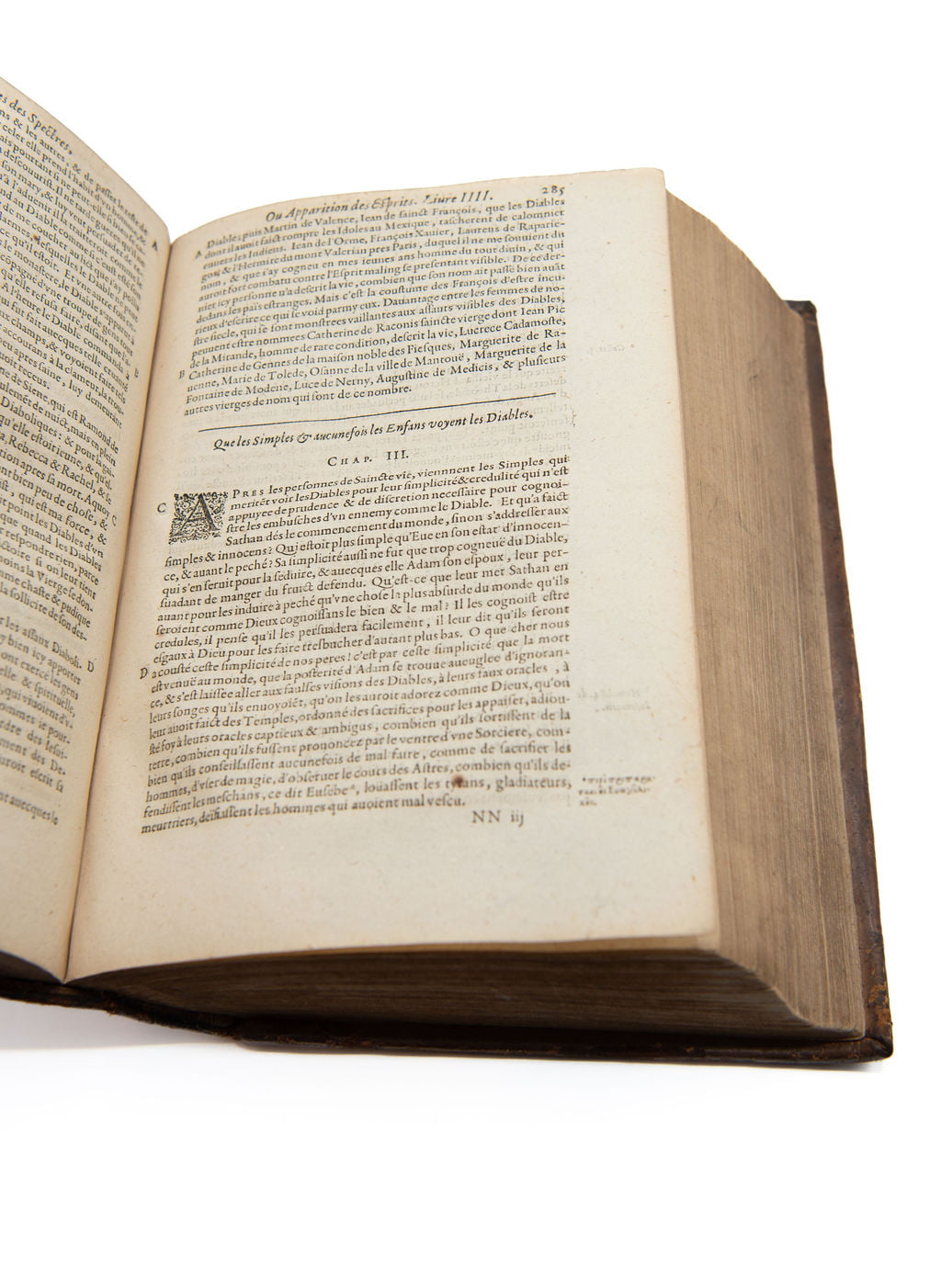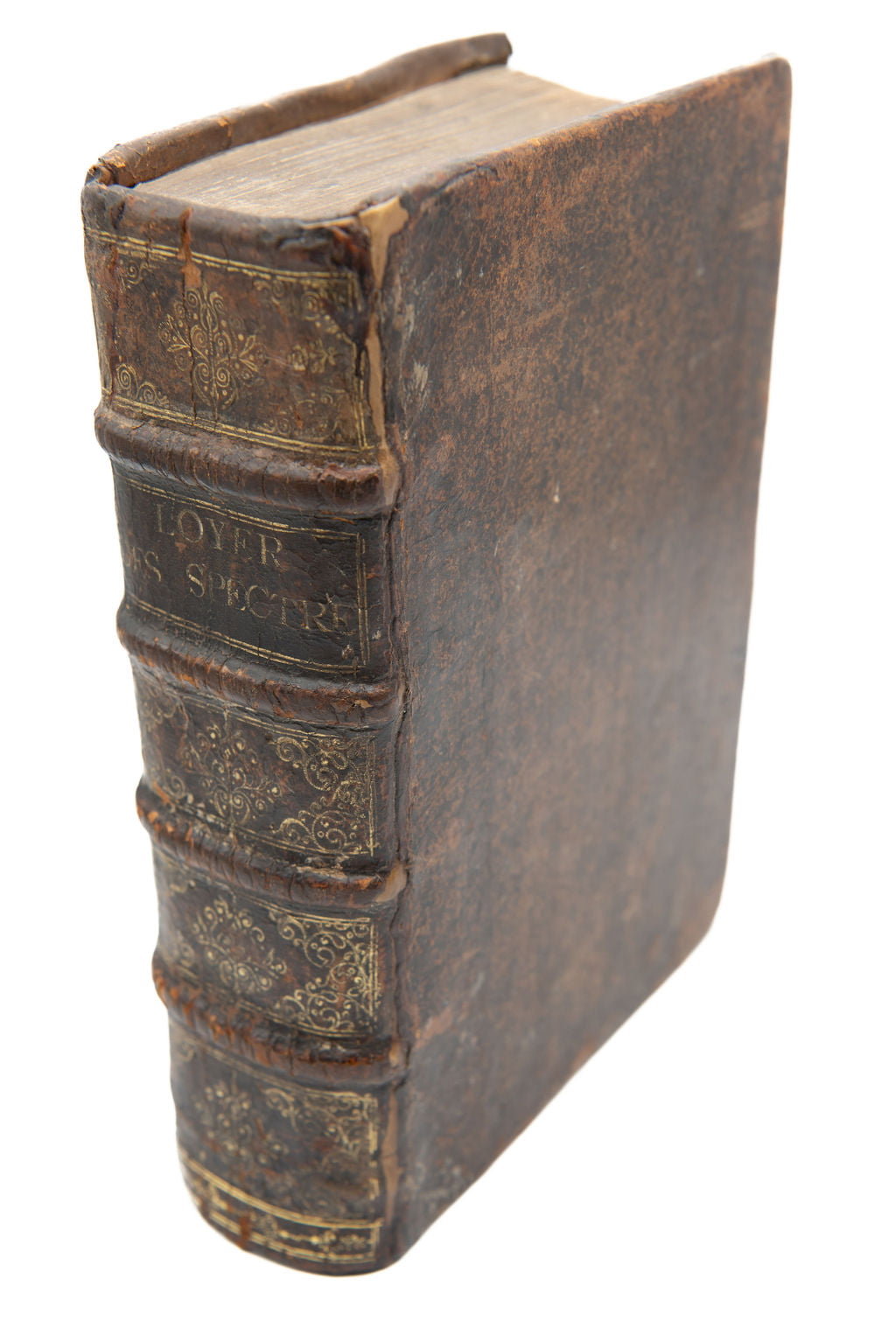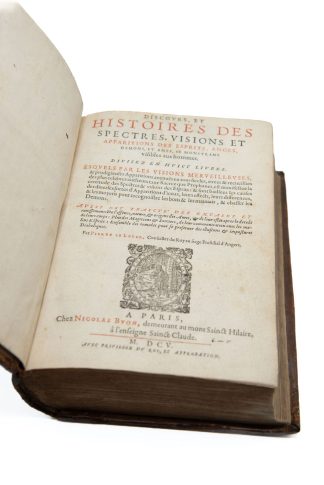LE LOYER, Pierre
Discours, et histoires des spectres, visions et apparitions des esprits, anges, démons et ames, se monstrans visibles aux hommes.
Paris, chez Nicolas Buon, 1605£5,750.00
4to. [xxvi], 976, [xl]. [a e i o² A-6M ]. Roman letter, some Italic and Greek. Title in red and black with Buon’s woodcut device, floriated woodcut initials, grotesque head and tail-pieces. Light age yellowing, occasional very light browning and minor spotting. A good copy, crisp and clean, in slightly later French speckled calf over thick boards, spine with raised bands, double gilt ruled in compartments, richly gilt with small scrolled and pointillé tools, title gilt lettered in second compartment, upper joint restored
Second edition of this highly influential and important work on ghosts, visions, demons, witches, and transformations by the the demonologist and poet Le Loyer (1550-1634). Using a number of ancient authors as sources, both religious and secular, Le Loyer details the causes of apparitions, the natures of spirits and demons, magicians and sorcerers, and how they communicate. Zachary Jones made a translation, the only early English version, from this second edition and his work introduced the term ‘Spectre’ into the English language. This second edition slightly changes the form of the work, dividing the text into eight parts, from four in the first. Le Loyer was a very considerable scholar, widely read in the medieval authors such as Lull and Nider and their later counterparts, Cardan, Lemnius and Sprenger. Whilst admitting that in many cases ghosts, apparitions, demons and prodigies were merely the result of a deranged imagination, hypersensitivity or natural occurrences, he insists that both good and bad spirits do appear to men in visible form. He discusses at length the question of the return of the souls of the dead, citing the opinions of Jewish cabalists and Moslems. Also considered in detail are the raising of demons, necromancy, the distinguishing of evil spirits from Angels, the souls of the dead, the use of charms and the practice of exorcism. He is contemptuous of Paraclesus and dismissive of alchemical medicine in general.“In the first chapter Le Loyer attempts to define the nature of spirits — which the author calls “spectres” — while also developing a scientific approach to this human phenomenon, which he distinguishes from the study of ghosts. In Le Loyer’s opinion, there is a real difference between “on the one hand, an apparition that is the product of the human imagination (insane or not), which he calls a ‘fantasm’ and, on the other hand, the apparition of a Spirit who, of its own accord takes shape in the human imagination as a spectre.” (Huot, p. 578).” Éliane Laberge. ‘Ghost stories by Pierre Le Loyer.’
“Before his treatise on ghosts appeared in 1586, Le Loyer was known as a playwright and poet .. he published a translation of Ovid’s ‘Ars Amatoria’ and three comedies..By the mid 1580’s Le Loyer was a writer of some repute. ..Now back in Angers the author chose to move away from poetry and devote his energies to a new project, a treatise on ghosts. The publication was evidently a costly and complex undertaking.… the result – a quarto of over a thousand pages – was an object de luxe, marked out for the gentleman’s library. .. The sheer number not to mention the range of Le Loyer’s sources are indeed impressive. So extensive is his reading in the Church Fathers and medieval theology, despite his lack of formal training, that Serclier was led to describe him as ‘un grand jusrisconsulte et theologian tout ensemble’. Over and above his Patristic sources, which he shared with a number of other writers on ghosts, Le Loyer’s inventio also included a number of hitherto unknown stories and examples…Le Loyer’s expertise as a linguist and a lawyer allowed him access to an unprecedented range of spectral narratives. His treatise is also notable for being the first work of French demonology to draw extensively upon – and subsequently influence – contemporary European cosmography.” Timothy Chesters. ‘Ghost Stories in Late Renaissance France: Walking by Night.’
A handsome copy of this monumental and most influential work.
BM STC Fr. C17th p. 305:796. Thorndike VI 531-33. Caillet 6456 Brunet III 959. Not in Duveen.In stock





